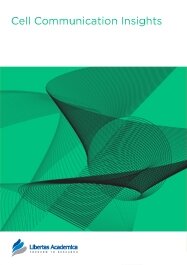

Publication Date: 30 Aug 2010
Type: Review
Journal: Cell Communication Insights
Citation: Cell Communication Insights 2010:3 1-10
doi: 10.4137/CCI.S5260

Elevated levels of plasminogen activator inhibitor type-1 (PAI-1) often occur in concert with the conversion of non-motile epithelial elements into a more migratory phenotype. While essential during embryonic development, this restructuring process, referred to as epithelial-to-mesenchymal-transition (EMT) is limited in the adult organism, occurring normally during wound repair or more atypically in tumor progression. Cell motility, the focal point of EMT, requires the coordinate regulation of multiple mechanisms which ensure proper communication between cell surface receptors and the extracellular environment. PAI-1, through multifaceted interactions with both extracellular matrix (ECM) and cell surface constituents plays a critical role in modulating many of these events. This review focuses on the complex role of PAI-1 in the cellular motile program.
PDF (1.38 MB PDF FORMAT)
RIS citation (ENDNOTE, REFERENCE MANAGER, PROCITE, REFWORKS)
BibTex citation (BIBDESK, LATEX)

My laboratory has published several papers in Cell Communication Insights. In each case, reviewer comments were returned promptly; the suggested revisions were both fair and quite helpful, reflecting positively on the quality of the review. Once accepted, the editorial office provided clear and frequent updates on the progress of our manuscripts through each step of the publication process. When necessary, I had prompt email responses to my questions and the figure quality was exceptional. Keep ...
Facebook Google+ Twitter
Pinterest Tumblr YouTube